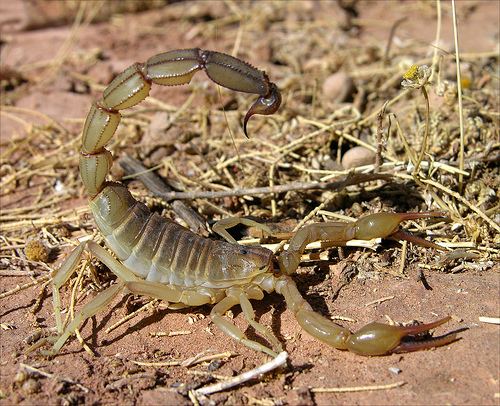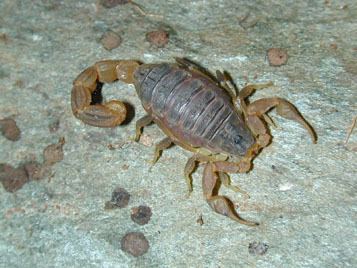Superfamily Buthoidea Rank Family | Scientific name Buthidae Higher classification Buthoidea Order Scorpion | |
 | ||
Lower classifications | ||
The Buthidae are the largest family of scorpions, containing about 80 genera and over 800 species as of mid-2008. Its members are known as, for example, fat-tailed scorpions and bark scorpions. A few very large genera (like Ananteris, Centruroides, Compsobuthus or Tityus) are known, but a high number of species-poor or monotypic ones also exist. New taxa are being described at a rate of several to several dozen new species per year. They occur in the warmer parts of every major landmass on Earth, except on New Zealand. Together with the Microcharmidae, the Buthidae make up the superfamily Buthoidea. The family was established by Carl Ludwig Koch in 1837.
Contents
Around 20 species of medically important (meaning potentially lethal to humans) scorpions are known, and all but one of these are members of the Buthidae. In dead specimens, the spine beneath the stinger, characteristic for this family, can be observed.

Description

Few Buthidae scorpions are among the larger scorpions; on average the members of this family are mid-sized tending towards smallish. Microtityus and Microbuthus barely reach 2 cm (0.8 in). The largest members are found among Androctonus (fattail scorpions), Apistobuthus, and Centruroides; and can reach a 12 cm (about 5 in). Most of them have between two and five pairs of eyes. Some resemble the Vaejovidae. The Chaerilidae and Chactidae have one pair of eyes at most, and the former show a yellowish spot between and to the rear of these.
Their vernacular name refers to the thick tails found in many Buthidae, especially in the Old World. The pedipalps, though, tend to be weak, slender, and tweezer-like. The Buthidae are generally rather cryptically colored, quite uniformly ochre to brown, but some are black or (like Centruroides and Uroplectes) more vividly colored. More conspicuous patterns and shapes occur, e.g., in Isometrus or Lychas.
Toxicity and relationship with humans
A handful of sometimes species-rich genera – fattail scorpions (Androctonus), Centruroides, Hottentotta, Leiurus, Parabuthus, and Tityus – are notorious for their strong venom. Human fatalities have been recorded from fewer than two dozen species; identification of a particular Tityus is likely problematic and detailed data on the venom exists only for a small fraction of the Buthidae (see BmKAEP from the venom of Mesobuthus martensii, for example).
